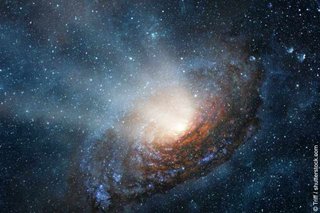Observational astronomy shows that the newly discovered young stellar objects (YSOs) in the immediate vicinity of the supermassive black hole Sagittarius A* located in the centre of our galaxy behave differently than expected. They describe similar orbits to already known young evolved stars and are arranged in a particular pattern around the supermassive black hole. Studies show that Sgr A* causes the stellar objects to adopt certain formations. The study is titled ‘Young Stellar Objects in the S-cluster: The Kinematic Analysis of a Sub-population of the Low-mass G-objects close to Sgr A*’ and has been published in Astronomy & Astrophysics. It involved researchers from the University of Cologne, Masaryk University in Brno (Czech Republic), Charles University in Prague (Czech Republic), the Academy of Sciences of the Czech Republic and the Max Planck Institute for Radio Astronomy in Bonn.
Around thirty years ago highly dynamic stars were discovered in the immediate vicinity of the supermassive black hole Sgr A* at the centre of the Milky Way. These stars, also known as S stars, circumnavigate the supermassive black hole with speeds of several thousand kilometres per second in a few years. The stars are surprisingly young and their presence is puzzling, as according to popular theories one would expect only old and dim stars in the immediate vicinity of the supermassive black hole.
The technological advancement that has taken place in recent decades and the long periods of observing the galactic centre using a modern telescope currently give rise to further questions. In 2012, for example, an object was discovered which the researchers assumed to be a cloud of gas that was ‘sucked up’ by the supermassive black hole. While this theory has not been confirmed, it has been unclear for a long time exactly what kind of object this might be. In recent years, mounting evidence has shown that it could be a YSO surrounded by a dusty cloud.
In addition to the S stars, researchers have currently been conducting research on a dozen objects in the direct vicinity of the supermassive black hole which also have very similar properties. They found out that the objects were even significantly younger than the already known high-speed stars. “Interestingly, these YSOs exhibit the same behaviour as S stars. This means that the YSOs circumnavigate the supermassive black hole with speeds of several thousand kilometres per second in a few years,” explained Dr Florian Peißker from the University of Cologne’s Institute for Astrophysics and corresponding author of the study. “The S stars were found to be surprisingly young. According to conventional theories, the additional presence of a stellar kindergarten composed of YSOs is completely unexpected,” added Dr Peißker.
Furthermore, this group of high-velocity objects consisting of YSOs and S stars appears to resemble a chaotic swarm of bees at first glance. However, in the same way a swarm of bees has a pattern and regular formations, so do the YSOs and the S stars. In this way the researchers were able to demonstrate that YSOs as well as S stars are arranged in a specific, organized way within three-dimensional space. “This means that there are specific preferred star constellations. The distribution of both star variations resembles a disc which gives the impression that the supermassive black hole forces the stars to assume an organized orbit,” according to Peißker.
Media Contact:
Dr Florian Peißker
Institute for Astrophysics
+49 221 470 7791
peisskerph1.uni-koeln.de
Press and Communications Teams:
Jan Voelkel
+49 221 470 2356
j.voelkelverw.uni-koeln.de
Publication:
https://www.aanda.org/articles/aa/full_html/2024/06/aa49729-24/aa49729-24.html
